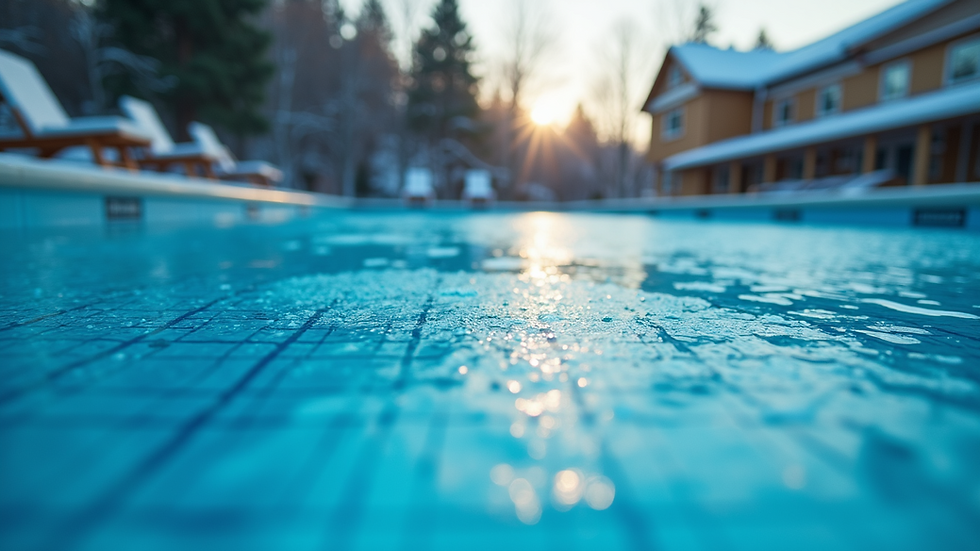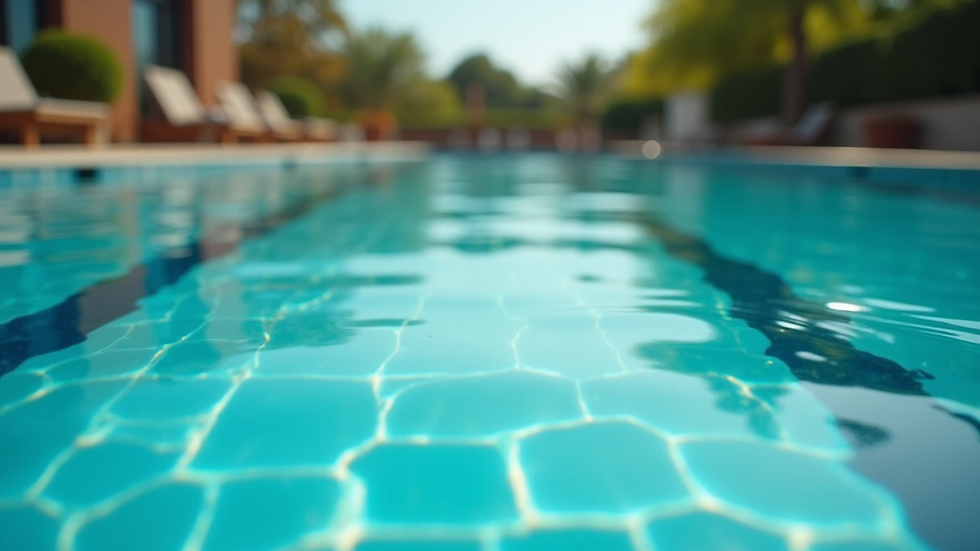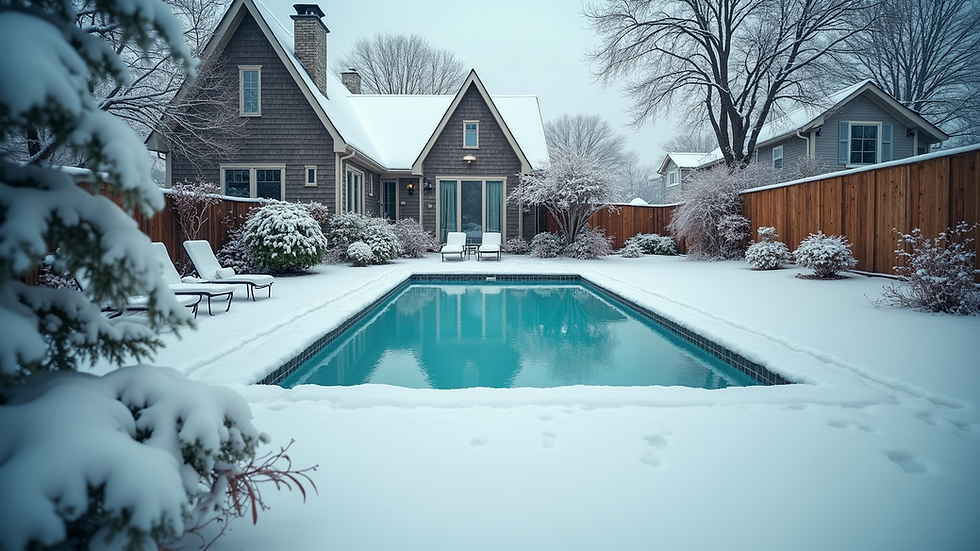Preparing Your Pool for a Harsh Canadian Winter
- London Landscape
- Jul 11
- 4 min read
As the vibrant hues of fall fade away and the chill of winter sets in, it's time for Canadian homeowners to think about winterizing their pools. The freezing temperatures and heavy snowfall of winter can wreak havoc on an unprepared pool. If you live in Canada and want to protect your investment, it's essential to take the necessary steps to prepare your pool for the harsh winter months ahead.

Understanding Winterizing Pools
Before diving into the specifics of winterizing, it's vital to understand what this term means. Winterizing a pool involves several steps aimed at protecting its components from cold weather damage. Each pool type may require different approaches, but the overall goal remains the same: safeguarding your pool’s interior, plumbing, and equipment.
Failing to properly winterize can lead to expensive repairs come spring. This includes damaged pool walls, cracked tiles, and broken filtration systems. Thus, understanding the process is crucial for any pool owner.

Key Steps for Winterizing Pools
1. Cleaning Your Pool
Before closing your pool for winter, a thorough cleaning is necessary. Start by removing leaves, dirt, and debris. Brush the walls and floor, ensuring that no residual matter remains that could stain or damage the pool surface over time. You might want to vacuum the pool to capture any leftover dirt or silt.
Once your pool is clean, check the chemical levels – particularly pH, alkalinity, and sanitizer. Adjusting these levels can help prevent algae and bacteria growth during the off-season.
2. Balancing Pool Water Chemistry
Balancing the water chemistry is a critical step in your winter pool preparation. Begin by making sure the pH level stays between 7.2 and 7.6. You’ll also want to ensure that the total alkalinity is between 80 and 120 parts per million. Additionally, a calcium hardness level of 200 to 400 parts per million will help protect your pool surfaces from corrosion.
When the pool water is balanced correctly, it will not only maintain the integrity of your pool surfaces but also help in preventing algae growth during the winter months, which are less susceptible but can still occur.
3. How Do You Winterize a Pool in Canada?
Winterizing a pool in Canada involves several key steps that differ slightly based on the type of pool you own (above-ground or in-ground). Here’s a breakdown of what you need to do:
Lower the Water Level: For most in-ground pools, it is advisable to lower the water level below the skimmer. This helps to prevent ice formation that could damage long-term components.
Drain and Store Equipment: Remove and drain all equipment, including hoses, pumps, and heaters. Store them in a dry location to prevent any freezing damage.
Use Winterizing Chemicals: Add winterizing chemicals specifically designed for this purpose. They help prevent algae and bacteria growth and protect your pool water over the winter.
Cover the Pool: Invest in a high-quality pool cover. This will protect your pool from debris and minimize evaporation. It's important to secure it tightly to prevent it from being blown away by winter winds.
Ensure Good Drainage: Make sure the area around the pool is well-drained. This helps prevent water accumulation that could freeze and expand, causing damage to your pool.
Proper winterization ensures your pool remains intact and ready for enjoyment in the warmer months. Taking these steps reduces the likelihood of costly repairs come spring.

Keeping Your Pool Safe Under a Cover
Once your pool is covered, it's essential to keep a close eye on it throughout the winter. Regularly check that the cover remains secure and free of debris. If snow builds up on your cover, gently remove it to avoid damage.
Depending on the type of cover you've chosen, there may also be maintenance requirements. Mesh covers might allow water to seep through but can trap debris, so you may need to regularly check and clean them.
Signs It's Time to Spring into Action
While winter has its charms, it can also be unforgiving. Signs that your pool needs attention can emerge even during the cold months. For instance, if the water level in your pool rises unexpectedly, it can indicate a leak.
After heavy snowfall, watch for ice accumulation on the cover. If left unchecked, this pressure could compromise both the cover and the pool beneath.
In the spring, when temperatures rise, it’s essential to inspect your pool closely for any signs of damage caused during the winter months. Address these issues promptly to minimize repair costs.
Professional Assistance
If you're feeling overwhelmed by the winter pool preparation process, seeking professional help can ease the burden. Many companies offer services specifically designed for winterizing pools. If you're in the market for professional assistance, be sure to consider options available in your area.
You can always check out this winter pool preparation service to ensure that your pool is well taken care of for winter.
Preparing for a Sweeter Spring
Winter preparation is pivotal to ensuring your pool remains inviting and safe for the coming season. Taking these simple yet effective steps not only protects your investment but also ensures fewer headaches when spring rolls around again.
By winterizing properly, you can spend your summer days lounging by a clean, well-maintained pool rather than dealing with extensive repairs. Remember, a little effort now can yield incredible returns when the weather warms up.
So start planning your winterizing tasks today and ensure that your pool remains the centerpiece of your home, ready for enjoyment for years to come.









Comments